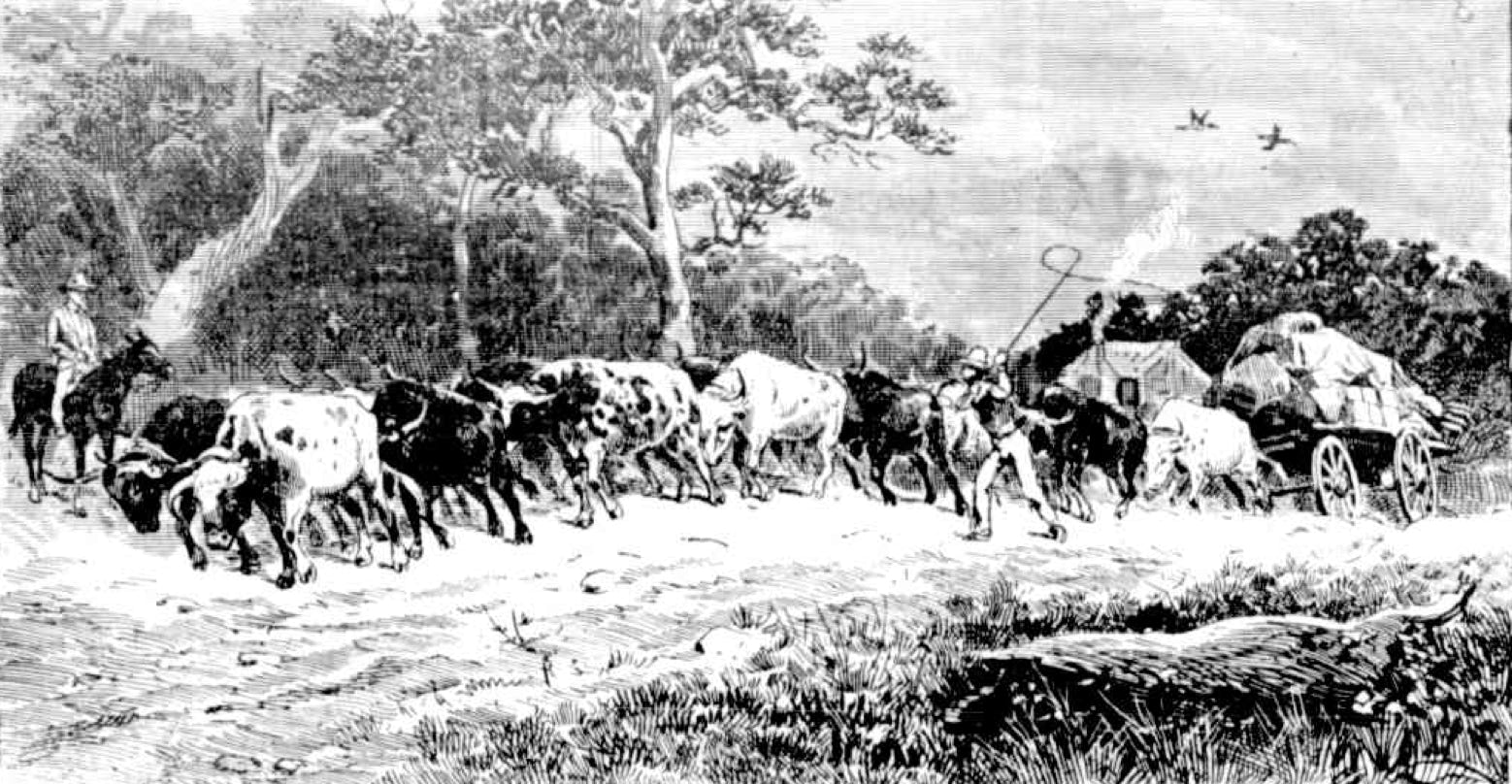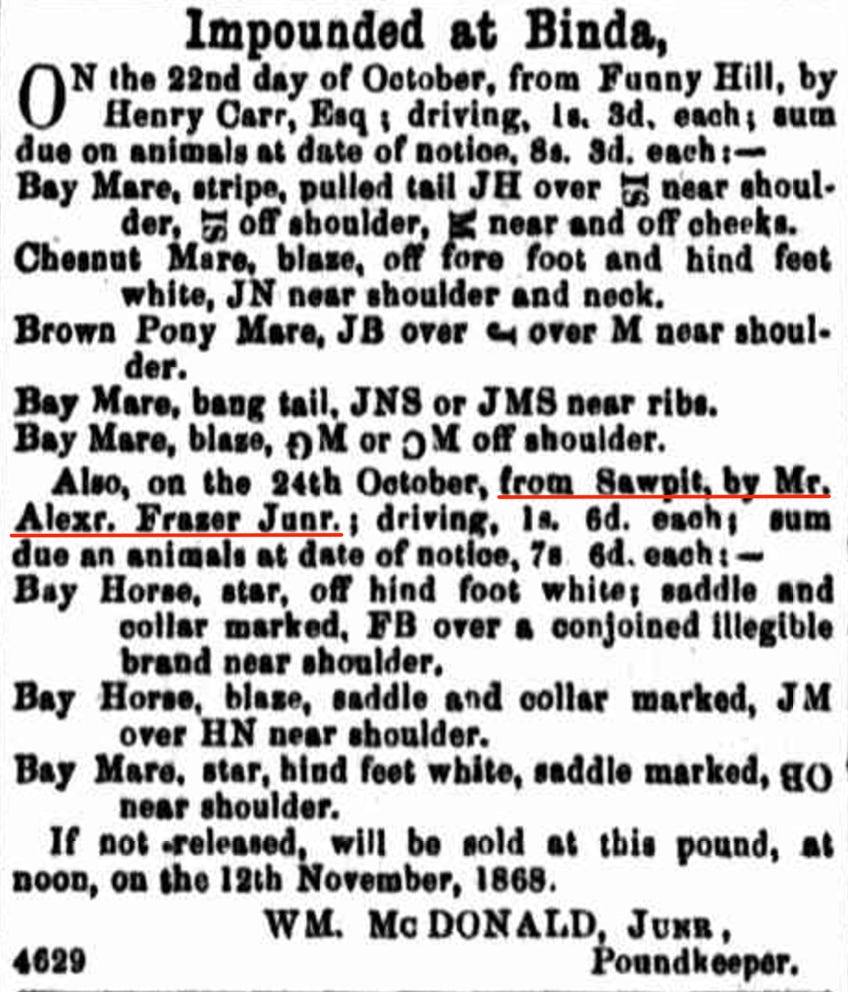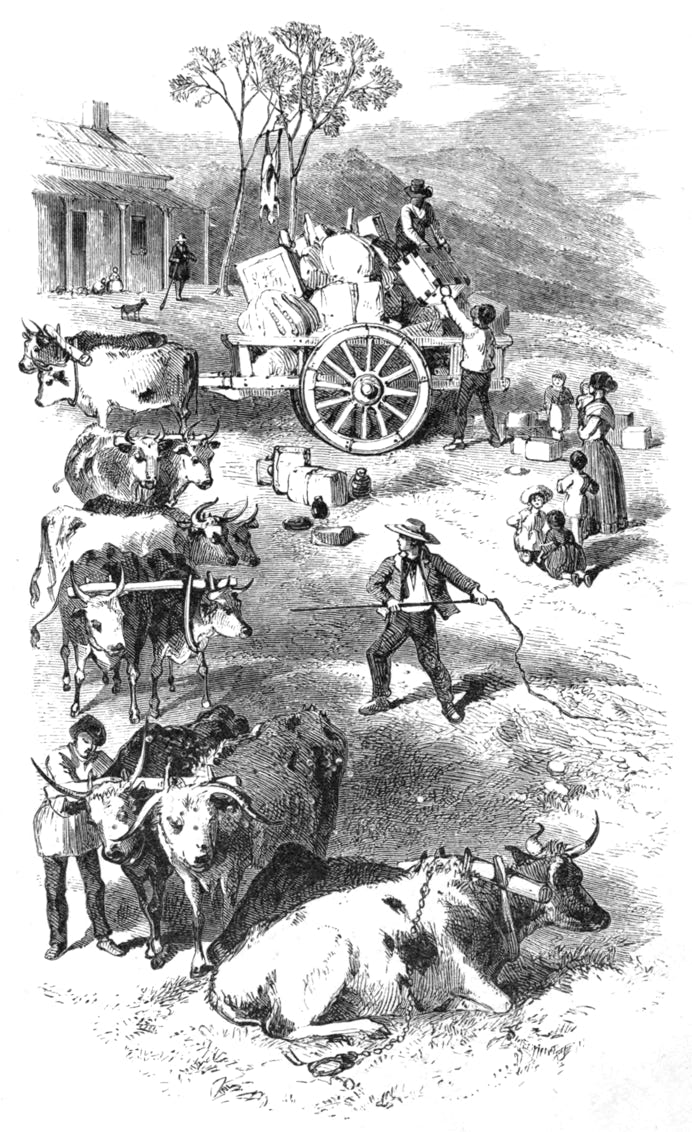
The image above is the illustration from original publication of “The Teams” by Henry Lawson.
The poem was first published in the Australian Town and Country Journal on 21 December 1889.
THE TEAMS
by Henry Lawson (1867 - 1922)
A cloud of dust on the long white road,
And the teams go creeping on
Inch by inch with the weary load;
And by the power of the greenhide goad
The distant goal is won.
With eyes half-shut to the blinding dust,
And necks to the yokes bent low,
The beasts are pulling as bullocks must;
And the shining tires might almost rust
While the spokes are turning slow.
With face half-hid 'neath a broad-brimmed hat
That shades from the heat's white waves,
And shouldered whip with its greenhide plait,
The driver plods with a gait like that
Of his weary, patient slaves.
He wipes his brow, for the day is hot,
And spits to the left with spite;
He shouts at "Bally", and flicks at "Scot",
And raises dust from the back of "Spot",
And spits to the dusty right.
He'll sometimes pause as a thing of form
In front of a settler's door,
And ask for a drink, and remark, "It's warm,"
Or say, "There's signs of a thunderstorm;"
But he seldom utters more.
But the rains are heavy on roads like these;
And, fronting his lonely home,
For weeks together the settler sees
The teams bogged down to the axletrees,
Or ploughing the sodden loam.
And then when the roads are at their worst,
The bushman's children hear
The cruel blows of the whips reversed
While bullocks pull as their hearts would burst,
And bellow with pain and fear.
And thus with little joy or rest
Are the long, long journeys done;
And thus - 'tis a cruel war at best -
Is distance fought in the mighty West,
And the lonely battles won.

The Goulburn Herald and Chronicle (NSW : 1864 - 1881)
Sat 31 Oct 1868 Page 5
Some years after settling in the Binda area Alexander (Snr) Fraser bought a team of bullocks and started a carrier business.
Teamsters were frequent victims of the bushrangers.
“Prized for their enormous strength and endurance and for their ability to pull steadily, rather than jerk a load as horses were prone to do, teams of bullocks, yolked together in pairs or fours, pulled wagons and drays along the rugged tracks that passed as roads in the early colonies.
Capable of covering up to 20 kilometres per day, depending on the state of the road and the weight of the load, the teams carted out supplies in exchange for wool, agricultural products and minerals.”
~ Exploring the Mysterious South by Valmai Phillips, Patricia Cobern and Ann Howard. Bay Books 1986.

The Goulburn Herald and Chronicle (NSW : 1864 - 1881)
Sat 3 Sep 1864 Page 3
On Boxing Day 1864, the bushrangers Ben Hall, John Gilbert, and John Dunn, rode into the town of Binda with three local girls. Together with the girls the gang robbed a shop owned by Edward Morriss.They locked all the local people into the Flag Hotel and made everyone dance to celebrate Boxing Day. Morriss got out of the hotel through a back window at 2.00 a.m. and set off to tell the police. Gilbert fired several shots at him. Hall got angry and so he set fire to Morriss's shop and burned it down. The gang and the girls left the town. The girls were later arrested for helping the bushrangers and were sent to Sydney for trial. Morriss joined the police force.

'Return of the Dray' printed abt. 1870 via Wikimedia
Frazer
- FRAZER - From Kingussie, Scotland, to Sydney, Australia.
- FRAZER - First to Cabramatta and then to Binda, New South Wales.
- FRAZER/MARKS/LAMB - Meeting the neighbours
- FRAZER/MARKS/LAMB - An Inn, Horse Races, and Gold;
- FRAZER - Bullock Drays and Bushrangers.
- FRAZER/MARKS - ‘Markdale’ - On the move again.
- FRAZER/MARKS - They made a long trek north.
- FRAZER - The Queensland story - By 1878 the Fraser family settled in Charleville.
- FRAZER/STEWART/DOODY - Charleville 1892 - Alexander Frazer married Agnes Jane Stewart.
- FRAZER - Wyandra 1905 - Alexander Jnr’s son, Alexander, works as a blacksmith.
- FRAZER - Wyandra 1915 - 1921 - The Great War and A Soldier’s Memorial.
- FRAZER - Will they still remember us?
- FRAZER/GRANT - Wyandra 1921 - 26 - A Marriage, and Christmas Mistletoe.
- FRAZER - Wyandra 1928 - A Fancy Dress Ball.
- FRAZER - Wyandra 1920s - Bullock Wagons to Tractors and Trucks.
- FRAZER - ‘Werona' via Bollon 1920s & 1930s.
- FRAZER - Barcaldine 1930’s - ‘Avonslea’’
- FRAZER - Barcaldine 1936 -1940s - ‘Avonslea’, Elm St. and a Flower Show.
- FRAZER - Brisbane 1950s - 1960s - West End and Coorparoo.
- FRAZER - Southport and Surfers Paradise.
- FRAZER - ‘Werona’ and ‘Beneree’ 1955 to 1970 - ‘Of drought and flooding rain’
- FRAZER - ‘Werona’ - Click go the shears
- FRAZER - Cunnamulla - “I can see the water tower!”
- FRAZER - Cunnamulla 1965 & 1966 - School Days
- FRAZER - ‘Werona’ - The bush hath friends to meet him
- FRAZER - ‘Werona’ - The magic of trees
- FRAZER - ‘Werona’ - A portrait of our chook yard
- FRAZER - ‘Werona’ - The moon is lonely in the sky
- FRAZER - Toowoomba - ‘Someplace Green’
- FRAZER Summary - Alexander Fraser & Margaret McBean to Alexander ('Sonny') Frazer.
- FRAZER 2016 ’Werona’ revisited
- FRAZER - Marks - Lamb - Stewart - Doody -The case is never closed.

